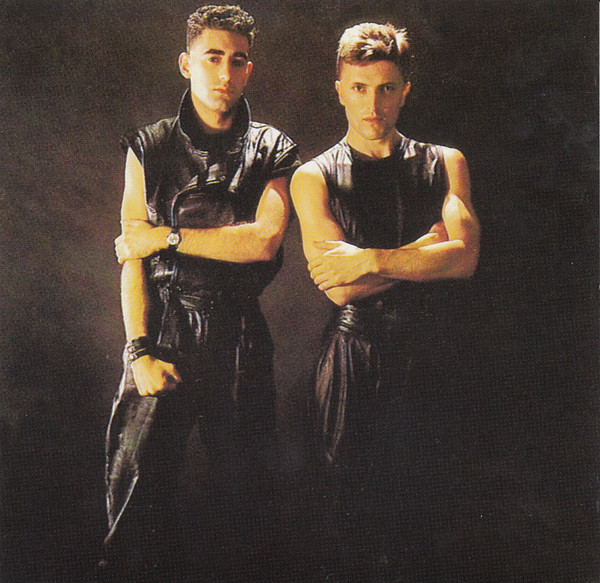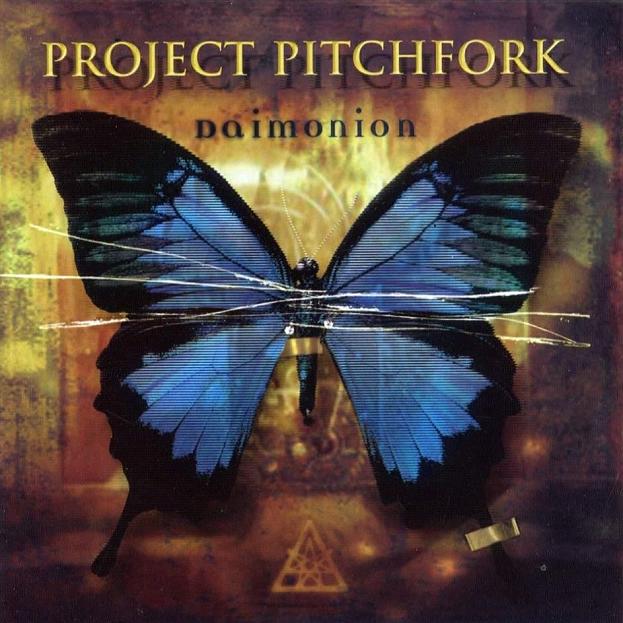Gold
It was also around this time that the line-up was reduced to a duo. Robert remains on drums, with a 16-step sequencer to play the synths. And ‘synths’ is only just a plural – most DAF songs only use one and no more than two keyboard tracks, and the departure of the guitars and bass from the mix didn’t change that policy. They kept Conny Plank on as producer, the legendary krautrock soundshaper making his own transition to newer styles, which would go on to become his primary focus up until his untimely death in 1987.
Gabi continued as vocalist, having established his style of not writing actual songs, but instead developing repeated phrases that utilised the German language for its aesthetic purposes. Capable of being provocative and aggressive, but also sexual and sometimes highly ironic, it’s as if Gabi (not a German speaker from birth) realised much of his potential audience wouldn’t understand what he was on about anyway, so a different approach was required.
And this approach is best exemplified on 1981’s Alles Ist Gut. The album is bookended by the looped sequence and sadistic whispers of opener Sato Sato and the detuned slog of the closing, title track. It does not take a musicological and linguistic expert to work out that Gabi’s repeated use of phrases that roughly translate to “Don’t be afraid” and “All Is Well” are not meant to be taken at face value, something lazy Google translations of the lyrics won’t tell you.
This concept is particularly important when we get to the DAF mega-anthem Der Mussolini. That all-encompassing descending synth line and driving beat are the setting for Gabi’s exhortations – “Tanz den Mussolini”, “Tanz den Adolf Hitler”. DAF were very much an anti-fascist band, Gabi having spent his early years in one of Europe’s last remaining dictatorships, but it did not stop the far-right dumb muscle from taking the whole thing literally and showing up at their shows with all their Sieg Heil nonsense.
It’s almost as though they saw this coming. The octave bassline and demented nursery rhyme chimes of Der Räuber und der Prinz tell the tale of a nobleman who falls in love with his kidnapper, a same-sex love story of the kind only DAF could have written – and there’s nothing like a homo-erotic case of Stockholm syndrome to stick it to the fascist wannabes. Sexual overtones of a broader nature are apparent in Rote Lippen and Mein Herz macht bum, the latter sounding at times like it was recorded not so much as a tribute to the rhythmic nature of intercourse, but actually whilst it was taking place.
There are other notable moments to pick out – the more abstract (in musical and lyrical sense) Ich und die Wirklichkeit, the anxious uncertainty of Als wär’s das letzte Mal and the rallying call of Alle gegen alle (later to become one of Laibach’s most anthemic ‘new originals’) all demonstrate Robert and Gabi’s talents for doing so much with so little. They all form part of an album notable as much for what is did not do as for what it did. The minimal electronic concept first conceived on Suicide’s 1977 debut album replaces Alan Vega’s All-American rock’n’roller stance with a more Teutonic efficiency and a heavy dose of sexual overtone, giving rise to a cult masterpiece.
Singles and Versions: Originally releases on LP and cassette with CD versions arriving from 1989 onwards. A number of 7” singles were issued, with tracks like “Der Mussolini”, “Als Wär’s Das Letzte Mal”, “Rote Lippen” and “Der Räuber Und Der Prinz” in various A/B-side combinations, though there is a version of “Der Räuber” backed with the otherwise unavailable “Tanz mit mir” which seems to be an outtake from the “Die Kleinen Und Die Bösen”.
Gold und Liebe followed later that same year, recorded with a similar setup. There are moments, such as Liebe auf den ersten Blick and Was ziehst du an heute Nacht when the DAF sound has evolved to the point where it resembles an early form of synthpop, a sexually charged Germanic counterpart to albums like Mode debut ‘Speak & Spell’ (which would be released only a few months later). Sex unter Wasser, meanwhile, has no counterparts anywhere, Gabi’s aquatic lovemaking fantasy set to a suitably fluid sequence, with some xylophone noodling thrown into the mix.
At the other extreme, Verschwende deine Jugend is the true EBM prototype, even moreso than “Der Mussolini”. The unsubtle in-your-face sequencing and the cynical “rally the youth” rant laying the ground first for Nitzer Ebb and then a hundred or so German and Swedish copyists. Hang around the right stages at Wave-Gotik Treffen and you’ll discover what I mean. Another piece that lays down a marker is instrumental Absolute Körperkontrolle. It translates as ‘Absolute Body Control’ – the Dirk Ivens project of the same name was formed a year prior to this, but the abstract rhythmic throb delivered is still a forerunner to several of the more minimal forms of industrial and experimental electronic music that will be covered here in the future.
However, there are also signs on this album that DAF were trying to deliver too much, too soon. Tracks like El Que and Muskel try to recapture the energies of their other dancefloor numbers, but the tightness has dropped off, resulting in recordings with less impact than previously. Goldenes Spielzeug brings back the nursery rhyme toy piano previously heard on “Der Räuber”, but the rather abstract subject matter and freeform structure results in a lesser song here as well. These slips do not make a bad album as such – few electronic bands at the time could tame their synths for two albums straight. It’s just the slight inferior of its predecessor.
Singles and Versions: Again, originally released on LP and cassette, with various CD issues following later. Also a slew of 7” singles, the lead tracks being “Goldenes Spielzeug”, “Liebe Auf Den Ersten Blick” and “Sex Unter Wasser”, with a couple of rare oddities as B-sides – “Gold Gold Gold” (didn’t that become an Ebb refrain?) and “Knochen Auf Knochen”.
The last album of the ‘Virgin Trilogy’ was released in 1982, ironically titled Für immer. The irony being that DAF had already decided to call it quits before recording was complete. They knew that that they had hit the limit of their setup and could not improve. Admittedly, by now most songs featured two synth parts, but that’s scarcely an innovation in an era when even the lowliest new wave wannabe could lay their hands on a multitrack.
The early tracks are evidence of limits being pushed – the bizarre tunings of Im Dschungel der Liebe and furious head-rush of Ein bisschen Krieg both vaguely interesting but ultimately rather forced attempts at squeezing every last drop of variety from their rig. The duo return to more familiar territory in the middle part of the album and are more successful for it. The urgent synths and falsetto vocals of Verlieb Dich In Mich and melodic noodling of Geheimis are both preludes to what would become the definitive version of Kebabträume.
It’s the same song as their 1980s single, but this version is by far superior in both rhythmic intensity and vocal commitment. With the unnecessary elements stripped away, we finally have the definitive “Cold War meets Hot Snacks” satirical synthiestomp. Sadly, it’s the albums high point – all we get from here are a trio of downtempo slogs and the spiralling finale of Wer Schön Sein Will Muss Leiden, which seems to try hard to make you like it, but it lacks any real hook. This creative phase of DAF’s career has reached its end.
Singles and Versions: The usual LP and cassette originals, with CD versions arriving many years later. The two (wisely-chosen) singles were “Verlieb Dich In Mich” and “Kebabträume”, both backed with “Ein Bisschen Krieg”. This time we got both 12” and 7” versions, though as the twelve was a relatively new format at the time, the songs are merely extended versions of the originals rather than the radical reworks we’d later associate with format.
When asked why the duo had split in late 1982, Gabi’s response was telling. “It’s like when you are painting a picture. Once it’s ready, why keep adding things to it”. Certainly, a statement compatible with the duo’s minimal style, and this stance became more understandable if you knew what was happening with the NDW genre at the time. The experimental sounds were being side-lined in favour of more commercially marketable recordings, an era of one-hit wonders and thinly disguised pastiches of the sentimental Schlager of times past. DAF’s moment had been and gone.





